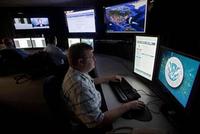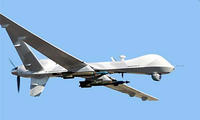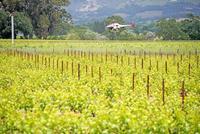-
Supreme Court cites NIST guidelines in ruling on cell phone searches
As digital technology transforms twenty-first century life, questions about privacy rights abound. The U.S. Supreme Court ruled on one such question in late June: if you are arrested, can the police search your cell phone without first obtaining a warrant? No, according to the 25 June 2014 ruling in Riley v. California. “Modern cell phones are not just another technological convenience. With all they contain and all they may reveal, they hold for many Americans ‘the privacies of life,’ … The fact that technology now allows an individual to carry such information in his hand does not make the information any less worthy of the protection for which the Founders fought,” Chief Justice John Roberts wrote for the majority.
-
-
License plate readers still to reach their full potential
Systems which automatically read automobile license plates have the potential to save police investigative time and increase safety, but law enforcement officials must address issues related to staffing, compatibility and privacy before the technology can reach its full potential, according to a new study. Addressing these issues will require a clear understanding of the current and potential value of the systems to criminal justice agencies.
-
-
NSA shelved collection program which could have prevented 9/11 attacks: Critics
Fourteen years ago the NSA research unit developed a collection program called Thin Thread which, its authors say, could have detected the perpetrators of the 9/11 attacks and prevented it. Critics of the program agreed it was a good program, but that it picked up more Americans than the other systemsthen being considered, and was thus deemed too invasive of Americans’ privacy. In the fall of 2000 General Michael Hayden, then-director of the NSA, decided against the program largely because of the legal implications.
-
-
Current White House drone policy a “slippery slope”: Report
An 81-page report, released last Thursday by the Stimson Center and authored by a bipartisan panel of former intelligence and defense officials, warned that the present targeted drone strike policy could represent a “slippery slope” toward never-ending war. The report stresses that drone operations should always be “having a positive effect on U.S. national security and not trading short-term gains for more negative longer-term strategic consequences.”
-
-
Leaked documents reveal law enforcement hacking methods

Through the sourcing of a leaked documents cache from the Italian firm Hacking Team, members of the University of Toronto’s Citizen Lab have revealed the methods of law-enforcement hackers. While much of Snowden’s revelations concerned broad international surveillance, documents from Hacking Team reveal more specific methods such as the actual techniques for tapping phones and computers to operate as eavesdropping devices.
-
-
Privacy advocates worried about new Senate cybersecurity bill
Privacy groups are concerned that a new Senate cybersecurity bill could give the NSA unrestricted access to personal information of Americans. The Cybersecurity Information Sharing Act (CISA), a counterpart to the Cyber Intelligence Sharing and Protection Act (CISPA) which passed the House in 2013, would create a “gaping loophole in existing privacy law,” several privacy advocacy groups wrote in a letter to lawmakers.
-
-
U.S. needs better intelligence cooperation with African states for effective counterterrorism strategy
The U.S. focus on counterterrorism efforts in Africa will require forming long-term partnerships with nations, an all-hands-on-deck commitment from all U.S. military branches, and a strong investment in intelligence, and surveillance technologies to face significant challenges created by the continent’s size and scope. Forming intelligence partnerships with Africa’s fifty-four countries, all with their own civil and military traditions, mixed with multiple languages and cultures is complex.
-
-
Drones must be used wisely to help advance U.S. interests

A new report examines three key issue sets in the unmanned aerial vehicle (UAV) debate: defense utility, national security, and economics; ethics and law; and export controls and regulatory challenges. The report concludes that UAV technologies are here to stay. Used recklessly, UAVs can endanger U.S. interests and diminish regional and global stability. Used wisely, they can help advance U.S. national security interests in the midst of a more robust global commitment to the rule of law.
-
-
Drones are cheap, soldiers are not: a cost-benefit analysis of war
Cost is largely absent in the key debates around the use of unmanned drones in war, even though drones are a cost-effective way of achieving national security objectives. Drones will never completely replace soldiers, but the drone-vs.-human being debate is becoming less important in the current strategic climate. The operating environments where drones are deployed — countries such as Pakistan, Somalia and Yemen — do not emphasize “hearts and minds” strategies where the human element has traditionally been valued as a force multiplier. Instead, objectives in these countries involve attacks on specific individuals, with operational data obtained by signal intelligence beforehand. Human contact becomes even less desirable given that a key tactic of combatants in these weak states is attrition with the aim of creating low-level civil conflicts. The end goal of these actions is to inflict high economic costs to the adversary. As a result, this remote and analytical method of engaging militarily leads to substantial cost efficiencies.
-
-
Supreme Court: police must obtain a warrant to search suspect’s cellphone
Earlier this week the Supreme Courtruled that law enforcement must obtain a warrant to search a suspect’s cellphone. Law enforcement argued that no current law makes a distinction between cellphones and the pocket litter (wallets, cigarette packs) which police have always been permitted to search when arresting a suspect, but Chief Justice John Roberts rejected this argument, saying, “That is like saying a ride on horseback is materially indistinguishable from a flight to the moon,” adding: . “Modern cell phones, as a category, implicate privacy concerns far beyond those implicated by the search of a cigarette pack, a wallet or a purse.” Roberts acknowledged that requiring police to seek a warrant could impede some investigations but “privacy comes at a cost,” he said.
-
-
Judge rules use of NSA surveillance-based information in terrorist case is legal
Lawyers for Mohamed Mohamud, a U.S. citizen who lived in Oregon, have been denied a motion to dismiss his terrorism conviction, with the court affirming the legality of the U.S. government’s bulk phone and e-mail data collection of foreign nationals living overseas. Mohamud’s defense team claimed the surveillance violated his constitutional rights, and that federal prosecutors did not make available to the defense evidence obtained via the surveillance. U.S. District Judge Garr King upheld Mohamud’s conviction, saying that suppressing the evidence collected through NSA surveillance “and a new trial would put defendant in the same position he would have been in if the government notified him of the (surveillance) at the start of the case.”
-
-
New generation of aerial robots for high-risk missions
The need for robots able to carry out high-risk service tasks, such as the inspection of power plants and the cleaning of skyscrapers, is growing. Robots which actively interact with the environment without being constrained on the ground are well suited to such tasks.
-
-
Defense in terror case challenges exclusion from court session on surveillance records
The defense for Adel Daoud, a young Muslim man who was arrested outside a Chicago bar in an undercover FBI operation and charged with attempting to blow up the bar, has submitted a motion objecting to a private court session held to discuss the defense’s access to classified records. “Not only do I not get to be there, but I didn’t even get to object,” defense attorney Thomas Durkin said. “I had to object over the fact that I couldn’t even make an objection.”
-
-
NSA, other agencies, collect millions of images for large facial recognition databases
The NSA, through its global surveillance operations, has been accumulating millions of images from communication interceptions for use in high-level facial recognition programs, according to classified 2011 documents leaked by Edward Snowden. The documents do not reveal how many people have been targeted with facial recognition programs, but given the NSA’s foreign intelligence mission, a bulk of the imagery collected would involve foreign nationals.
-
-
Drones offer farmers eyes in the sky to check on crop progress

Commercial use of unmanned aerial vehicles in U.S. airspace was banned by the Federal Aviation Administration in 2007, although growing numbers of hobbyists have been toying with the use of drones, particularly for aerial photography. Facing mounting pressure from agribusiness, retail, and other industries, however, the FAA is expected to release new policies by 2015 that will enable businesses to integrate drones into their operations. The agriculture industry is expected to be one of the largest market segments for drone usage. This growing season, crop researchers at the University of Illinois are experimenting with the use of drones on the university’s South Farms. A crop sciences educator is using two drones to take aerial pictures of crops growing in research plots on the farms.
-
- All
- Regional
- Water
- Biometrics
- Borders/Immig
- Business
- Cybersecurity
- Detection
- Disasters
- Government
- Infrastructure
- International
- Public health
- Public Safety
- Communication interoperabillity
- Emergency services
- Emergency medical services
- Fire
- First response
- IEDs
- Law Enforcement
- Law Enforcement Technology
- Military technology
- Nonlethal weapons
- Nuclear weapons
- Personal protection equipment
- Police
- Notification /alert systems
- Situational awareness
- Weapons systems
- Sci-Tech
- Sector Reports
- Surveillance
- Transportation
Advertising & Marketing: advertise@newswirepubs.com
Editorial: editor@newswirepubs.com
General: info@newswirepubs.com
2010-2011 © News Wire Publications, LLC News Wire Publications, LLC
220 Old Country Road | Suite 200 | Mineola | New York | 11501
Permissions and Policies
Editorial: editor@newswirepubs.com
General: info@newswirepubs.com
2010-2011 © News Wire Publications, LLC News Wire Publications, LLC
220 Old Country Road | Suite 200 | Mineola | New York | 11501
Permissions and Policies
